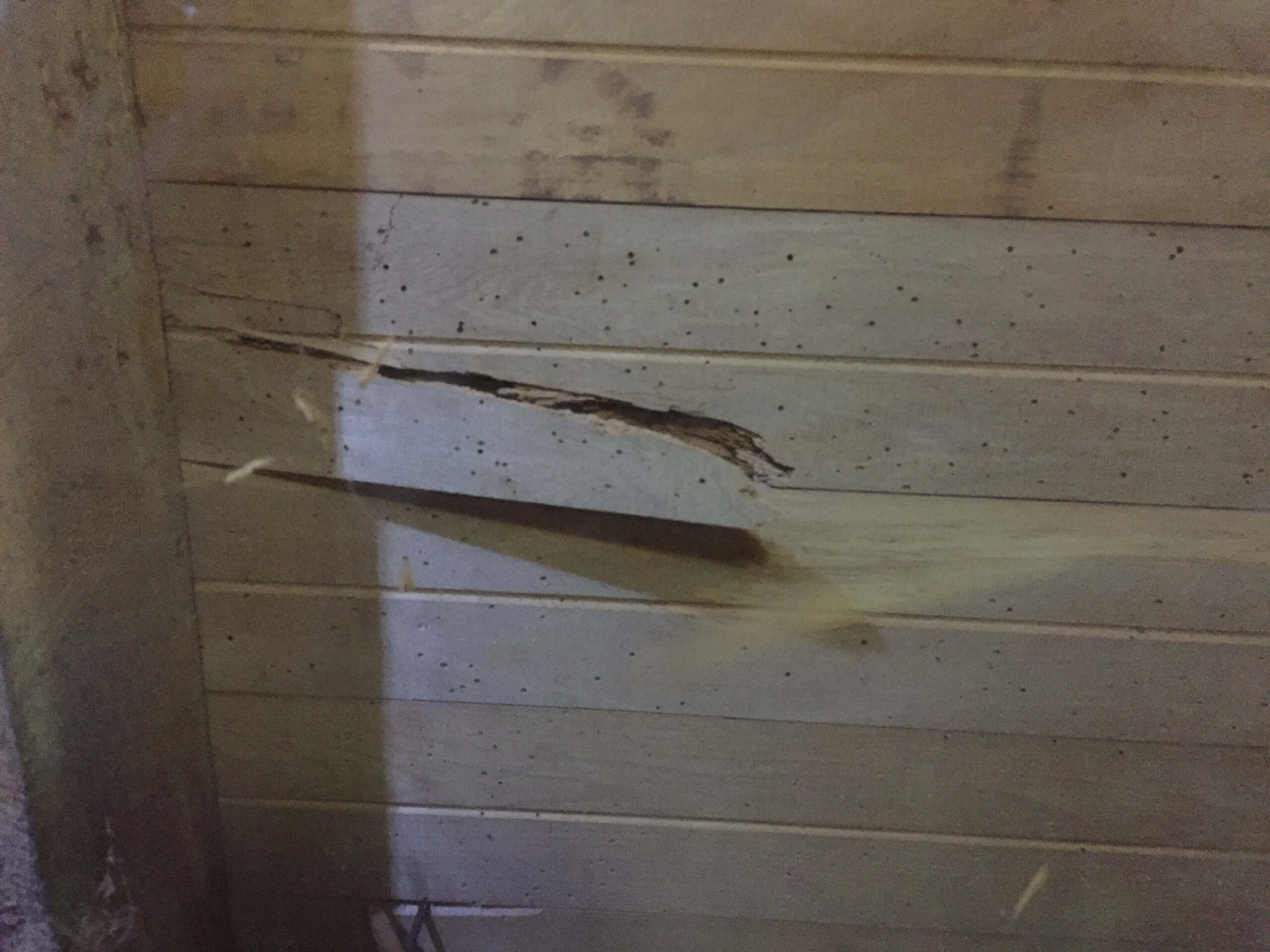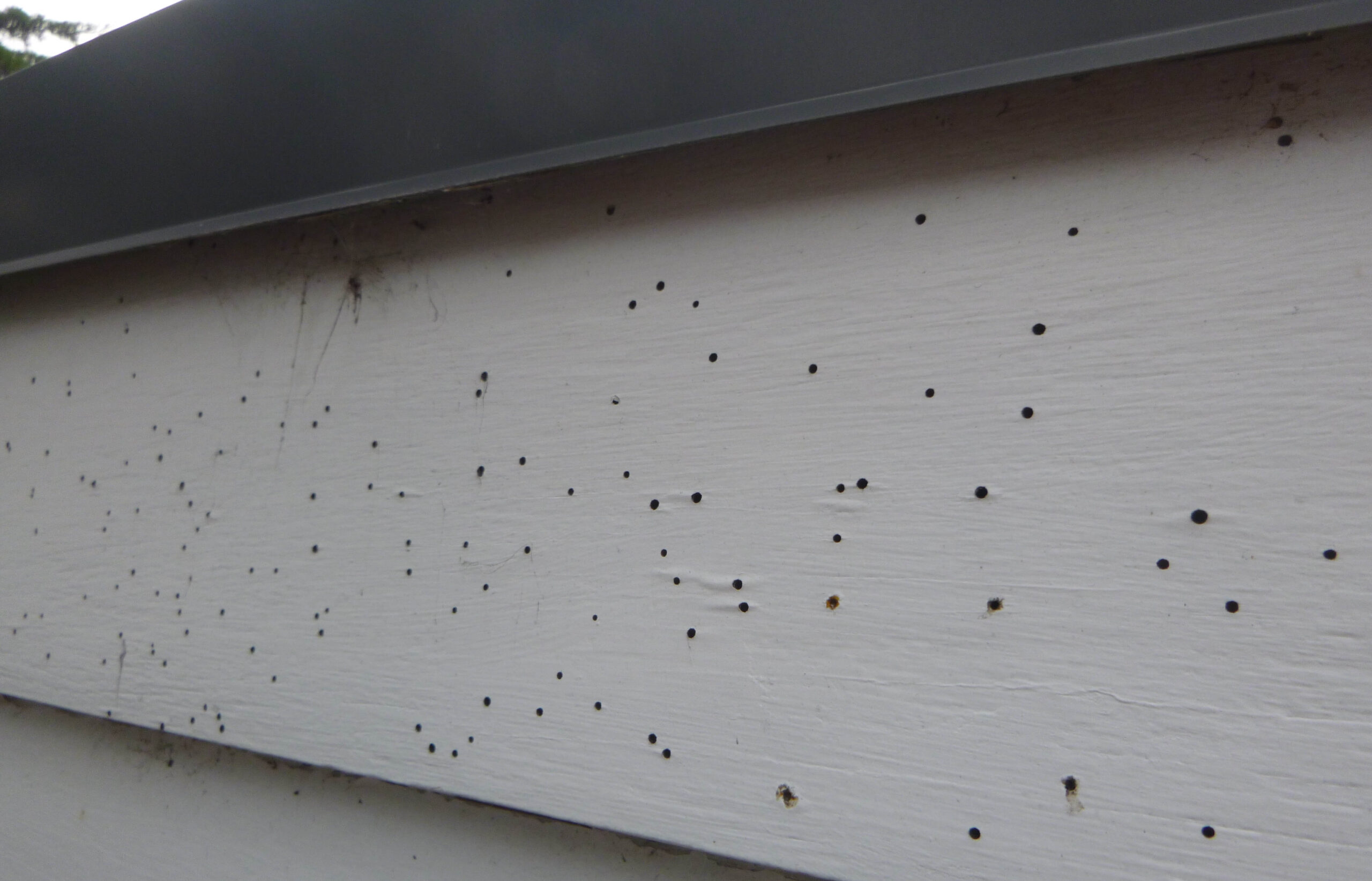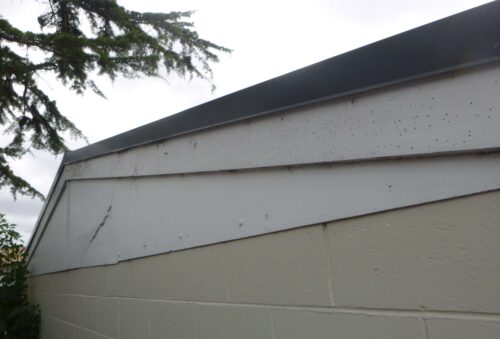You just need to Google borer NZ to discover our homes may have a problem so it is a wise decision when buying a house, especially an older property to check it for borer, especially in colder areas of the country like Southland and Otago and places like Canterbury and Wellingto,n where homes are earthquake-prone. Borer is one of the main reasons homes have become ‘at-risk’ in an earthquake because the infestations have compromised the foundations and structural integrity. If ignored, borer can weaken timber and do long-term damage to your home or property.
What are borer?
There are two main types of borer found in New Zealand, the Common House Borer ( Brown Beetles )- Anobium Punctatum and the Two Tooth Borer – Ambeodontus Trustus. The larvae are slow eaters; they chew through the interior of untreated timbers for 2-4 years before emerging from the wood between October and March. As they emerge, they open the small (2-3mm) holes in the surface of the wood that we identify as borer infestation. When we see these holes in our homes in weatherboards, architraves, skirting, window frames, floor boards and furniture, we only see the ‘tip of the iceberg.’ The vast majority of the damage is within the timber, where a labyrinth of tunnels has weakened the wood in our homes.
Infestation by the common house borer generally tends to cease before timber becomes structurally unsound because these borers attack only the sapwood in the softwood timber – most framing wood has sufficient heartwood to avoid a serious weakening problem.
Infestation by two-tooth borer is far more serious as they can attack heartwood as well as sapwood. Structural failure sometimes occurs before their presence becomes evident in our homes.
What are the signs that wood is affected by borer?
- Exit holes in timber including timber furniture-also known as flight holes, these will be round or oval with sharp edges.
- Tunnels in the timber – known as galleries, these become visible over time as borer infestation grows.
- Borer dust – known as frass, is usually visible below infested timber.
- Crumbling wood – usually found around the edges of roof joists or floorboards, as wood fibres are destroyed.
- Living or dead beetles – usually found near the infested wood.


Can Borer really compromise the structure of my home?
Left uncontrolled, wood borers can severely compromise the structural integrity of your home.
Borer damage is frequently found in old villas, especially where sapwood rimu and untreated air-dried pine have become damp.
Damage can appear in any area of your home that has wood, including floors, door and window frames as well as interior and exterior walls. Of particular concern is the activity in places you can’t easily see, like your roof space and underfloor cavities and timber house piles.
Older houses with structural timbers made of good quality heartwood are likely to be structurally safe as borer tend to attack softer timber, but even these houses often have decorative or non-structural timbers of softer sapwood. Weatherboards or floorboards riddled with borer flight holes next to undamaged boards are not uncommon. Even the same board may be heavily damaged in one area and undamaged elsewhere.
How a Jim’s Building Inspection can help with your house borer issue.
A Jim’s building inspection report on your home or potential home will identify the presence of (Timber pests) borer and highlight conditions conducive to future activity as well as recommend borer treatment, for instance, a borer bomb to safeguard your home or recommend a professional pest exterminator. Contact us, we are happy to help.
Conlusion
Purchasing a home with a borer infestation in New Zealand requires careful consideration. While the Common House Borer typically affects only the sapwood and may not compromise structural integrity, the Two-Tooth Longhorn Borer can damage both sapwood and heartwood, posing a more significant risk. Early detection through professional inspections and timely treatment is essential to mitigate potential damage. Engaging experts like Jim’s Building Inspections can provide valuable insights and recommendations, ensuring informed decisions when buying or maintaining a property.
FAQs
Borer refers to wood-boring beetles whose larvae tunnel through timber, weakening the wood over time. In New Zealand, the Common House Borer and the Two-Tooth Longhorn Borer are prevalent.
Signs include small round or oval exit holes (2–4mm), fine powdery dust (frass) beneath infested timber, and crumbling wood, especially around edges of roof joists or floorboards.
Yes, particularly in older homes with untreated timber, especially in regions like Southland, Otago, Canterbury, and Wellington.
Left uncontrolled, borers can severely compromise the structural integrity of your home, especially if they affect critical timber components.
Ensure proper ventilation to prevent damp conditions, treat untreated timber with protective chemicals, and maintain regular inspections, especially in older homes.
With proper inspection and treatment, purchasing a home with a borer infestation can be safe. It’s crucial to assess the extent of the infestation and potential repair costs.
Treatment effectiveness varies; some methods protect for several years, while others may require reapplication. Regular maintenance and monitoring are recommended.
While there may not be specific legal requirements, disclosing known borer issues to potential buyers is considered ethical and can prevent future disputes.
Active holes are clean and sharp-edged, while older holes may appear dull due to dust and paint buildup.



